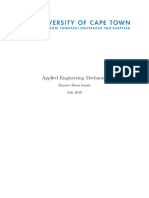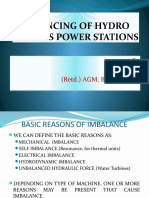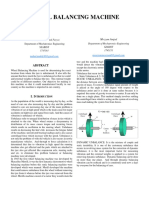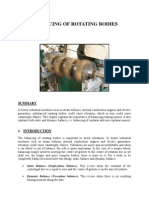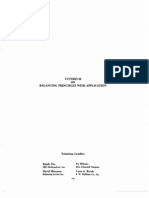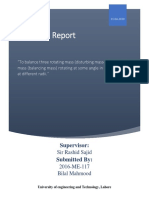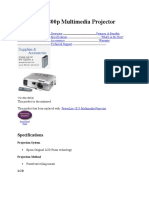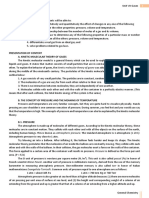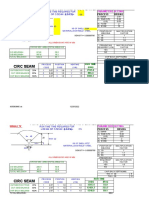Dynamics of a Washing Machine’s Spin Cycle
Problem
To determine how a washing machine spin cycle works, as well as how the modern day spin
cycle is self-balancing.
Interesting Phenomena
You are washing your clothes in your mom’s old washing machine and when it gets to the spin
cycle you start to hear loud thuds coming from inside the washing machine. What causes this
problem and what do you do to fix it? You open the lid and rearrange the load in an attempt to
make the load better balanced. Why is it when you do your laundry at the laundry mat you don’t
have to worry about balancing your clothes? The answer to these questions is proven through
the use of some simple properties of dynamics, Eulers 1st and 2nd laws.
Analysis
Euler’s 1st and 2nd laws can easily explain the dynamics of a washing machine spin cycle.
�Sigma Fc = Sigma mIaI 1st Law
Sigma Mp = rcp x (Sigma mIaI) 2nd law
In Euler’s 1st law the force is what pushes your clothes to the exterior of the basket then the
force pushes the water in your clothes out of your clothes and through the holes in the washing
machine basket.
Sigma Fc = m[ac + (alphab/g x rci) + (wb/g x wb/g x rci)]
Sigma Fc = m[ rciwb/g2 ]î
If the load is balanced, i.e. all the point masses at the exterior of the basket are equal. Then the
Sigma Fc = 0 due to the fact that the forces induced by point masses at 180o from each other will
cancel each other out.
Sigma Fc = F1 + F2 = 0
�Now let us suppose that the point masses on the outside of the basket are not equal. This will
lead to the Sigma Fc <=> 0. This in turn leads to a moment around the base of the basket, which
causes the basket to wobble . This can be seen from the drawing.
Sigma Fc = Sigma mIaI <=> 0
Sigma Mp = Sigma rCP x Sigma mIaI
Top
View Side View
�Now for a self-balancing washing machine springs are inserted in a circular pattern around a
point lower than ‘P’. These springs create forces and moments that counteract any forces and
moments that could be created at ‘P’ by an unbalanced load. The exact spring constants would
be determined by the engineer for the required application.
�
Applications
The theory behind spinning an unbalanced load can be applied to many other applications in the
engineering world. One example would be car wheels. When you get new tires put on your
wheels the wheels are placed in a balancing machine which tells the mechanic were to add
weight to the rim of the wheel to balance the wheel. If you didn’t get your tires balanced your
car would shake and pull from the unbalanced forces created in the wheel. Another example is
of turbine blades. When turbine blades are made they are not made perfectly balanced and the
have to be ground in places to balance them. If the blades weren’t balanced they would break
the shaft that they were mounted on and destroy the turbine.
�Conclusion
In the preceding analysis it can be concluded that an older washing machine with an unbalanced
load creates noise from the basket rattling around in the steel frame. The basket rattles around
due to the moment created at the base by the unequal forces created by the unbalanced load. But
with the simple addition of the springs at the base of the washing machine it can be shown how a
self-balancing washing machine works

